The 5 Best Lights For Leopard Geckos
This page contains affiliate links. We may earn money or products from the companies mentioned in this post through our independently chosen links, which earn us a commission. Learn More
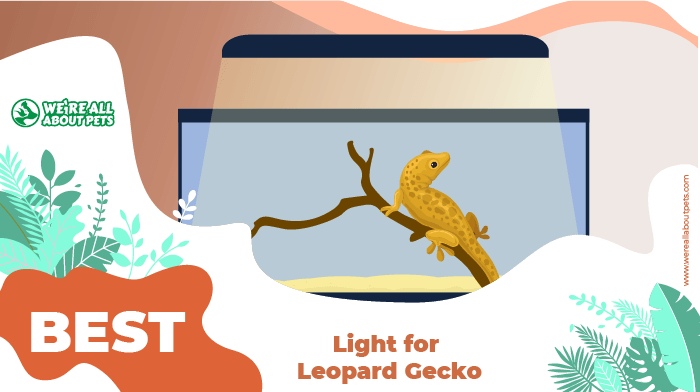
The leopard gecko is a popular pet lizard and a good choice for first-time reptile keepers. Their native habitat is the deserts in the Middle East and Northwest India.
They are generally found in underground burrows during the heat of the day and become active at dusk and dawn (crepuscular).
In captivity, they are popular due to their unique colors and their fat tails.
They can be tolerant of handling and interaction with their human caretakers, though it’s best to interact on their schedules and leave them undisturbed in the middle of the day.
In properly caring for any reptile, it’s important to provide the proper lighting, temperature, humidity, cage substrate, diet, and nutritional supplementation.
While lighting requirements aren’t as strict for leopard geckos as with other species, there are some important considerations to keep them happy and healthy.
Compare Best Lights For Leopard Geckos
|
Best Compact Fluorescent Bulb
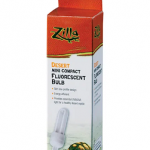
4. Zilla Compact Mini Fluorescent Bulb – Desert |
||||
|
Type
LED |
Type
Halogen |
Type
Compact fluorescent |
Type
Compact fluorescent |
Type
Incandescent |
|
Size
18” to 26” |
Size
25w or 50w |
Size
13w |
Size
6w |
Size
100w |
|
Features
High-output daylight LEDs, 20,000 hour life range |
Features
Provides light and warmth, highly efficient |
Features
Compact design, vertical or horizontal placement |
Features
Compact design, energy efficient |
Features
Provides ambient heat, minimal visible light |
What To Look For In Lights For Leopard Geckos?
Lighting recommendations for leopard geckos have evolved as we have gained new knowledge of their needs. They generally don’t bask in the heat of the day, and they don’t have a documented need for UV lighting to properly produce the vitamin D needed for utilizing calcium in their diets.
However, recent studies have shown that although UV light isn’t a strict requirement, they will do better with some exposure to lower intensity UV lighting.
Here are some important things to look for in leopard gecko lights:
- Wattage/size. The best daytime lighting option is one that illuminates the tank and mimics daylight. A low-wattage, full-spectrum bulb is best suited for this purpose. They should have a hide available to get out of the light when resting. At night, lighting may not be required if there is any ambient light in the room. If one is needed, use a low-intensity blue bulb. Red lights are available for the night, but it has been demonstrated that red lights cause stress. The thought is that blue light more closely mimics the moonlight and light that penetrates further into the atmosphere when the sun is lower on the horizon.
- Temperature. Most keepers choose under cage heating for leopard geckos. In that case, there’s no need to worry about choosing a heated bulb.
- Color. For daytime lighting, a full spectrum visible light bulb is recommended. Again, for night-time, no lighting requirement if there’s ambient light in the room. Use a blue bulb if light is required.
- Ultraviolet: It has been shown that UV light offers benefits for leopard geckos. However, use a low-intensity bulb. High-intensity UV lighting can damage their corneas. The UV light can be set on a timer for 2 hours in the evening, and another 2 hours in the morning when they’re most active.
- Fixture. The type of lighting you choose will determine the type of fixture you need, and vice versa. If you want to go with a simple option, a dome lamp you can place on top of the cage is the easiest option and there are both day and night bulbs readily available.
Our Top Picks For The Best Lights For Leopard Geckos
Now that you have a better idea what to look for in a leopard gecko light, it’s time to start shopping! Keep reading to see our top 5 picks for the best lights for leopard geckos.
ZooMed Reptisun Led Light Fixture
Product Info
- Type: LED
- Size: 18” to 26”
- Features: High-output daylight LEDs, 20,000 hour life range
- Long life
- Good light spectrum
- Night lights included
- One of the higher priced options
- No UV included (though there is the option for the hood that combines a 5.0 UV light).
With a 20,000 hour life range, this bulb also provides high-output 6500K white light to simulate natural daytime lighting. This LED fixture adjusts from 18” to 24” long, making it perfect for medium to large terrariums.
Zilla 25 - 50w Day White Mini Halogen Lamp
Product Info
- Type: Halogen
- Size: 25w or 50w
- Features: Provides light and warmth, highly efficient
- Inexpensive
- Low-profile design
- Caution required with the amount of heat produced
Not only is it up to 250% more efficient than incandescent light, but with thicker glass and a stronger filament, this bulb offers a usable lifespan of over 1,000 hours – double the life of an incandescent bulb.
ZooMed 5.0 Reptisun Mini Compact Fluorescent Bulb
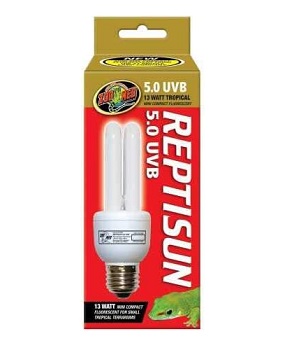
Product Info
- Type: Compact fluorescent
- Size: 13w
- Features: Compact design, vertical or horizontal placement
- Good low-intensity UV lighting
- Fairly good cost
- The bulb will continue to operate after the UV spectrum is exhausted (replace every 6 months)
With 30% UVA and 5% UVB output, this is a full-spectrum bulb that mimics natural daylight but it doesn’t produce excessive heat.
Zilla Compact Mini Fluorescent Bulb – Desert
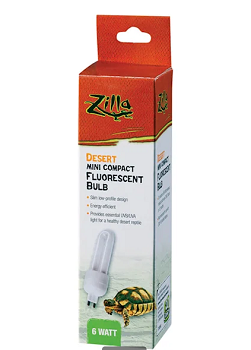
Product Info
- Type: Compact fluorescent
- Size: 6w
- Features: Compact design, energy efficient
- Good low-intensity UV lighting
- Fairly good cost
- The bulb will continue to operate after the UV spectrum is exhausted (replace every 6 months)
It features a slim, low-profile design and it is incredibly energy efficient, using only 6 watts of power. Best of all, this compact fluorescent bulb is sold in a four-pack, so you’ll always have a backup ready to go.
Zilla Incandescent Bulb – Night Black
Product Info
- Type: Incandescent
- Size: 100w
- Features: Provides ambient heat, minimal visible light
- Inexpensive
- Durable, good night light spectrum
- No heat produced
- Lowest wattage is 50W which may be too intense for small enclosures.
Unlike red heat lamps, this black lamp allows your leopard gecko to engage in natural nighttime behaviors without causing undue stress. It produces a gentle glow with focused heat and offers heavy-duty durability with long-lasting performance.
Tips For Lighting Your Leopard Gecko Tank
Leopard geckos have lower demands for care when compared to many other pet reptiles, but they do still have lighting needs to remain healthy. Especially when considering ani8mals that spend the majority of their lives in an enclosure, it’s important to make sure the environment provided is as close as possible to what they would get in the wild.
Here are some simple tips for lighting a leopard gecko tank:
- Remember that leopard geckos are crepuscular animals, so provide daytime lighting, but also a hide to get away from the light during resting periods in the day.
- Set lighting to a timer to stay on for a better way to mimic the natural day/night cycle.
- Leopard geckos have no need for a basking light or UVB lighting, but a low-intensity UV bulb may be beneficial if used for a few hours per day.
- There is little need to light your leopard gecko tank at night – too much lighting might disturb your gecko or impair its natural behavior. Make sure that enclosed hides are available in both the warm and cool ends so your gecko can have a quiet, dark place to spend the day undisturbed.
- Check your lighting often to make sure it is still working properly – follow the manufacturer’s recommendations for how often to replace the bulbs.
Final Remarks
Choosing the right lighting for a leopard gecko tank is just one portion of the care. It all starts by choosing the right terrarium. Make sure the lighting you choose works well with the choice of heating elements and arrange the tank in a way that supports the gecko’s natural behavior.
If you’re still not sure where to start in looking for a leopard gecko light, try out one of the top 5 best leopard gecko lights reviewed above. Good luck!






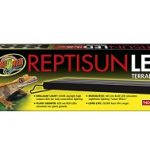
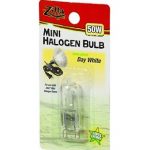
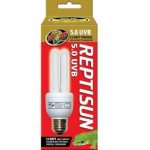
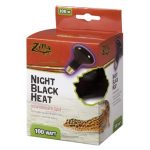
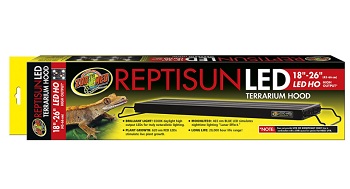

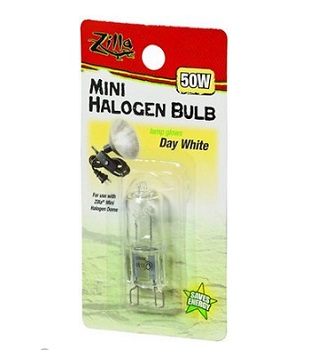
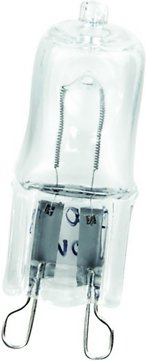
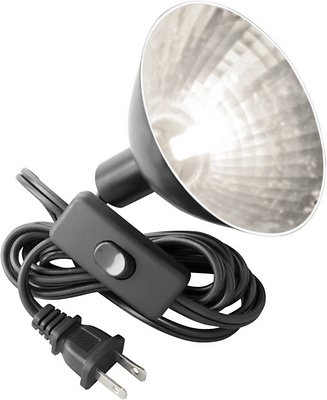
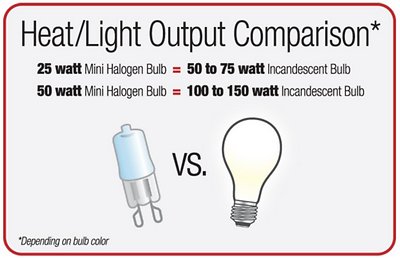
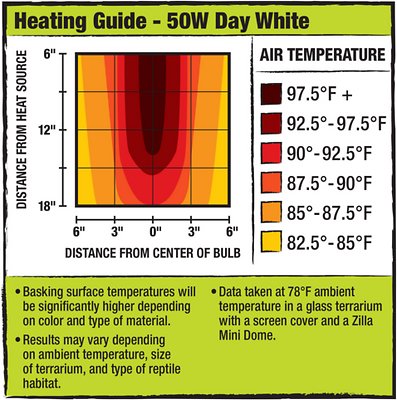
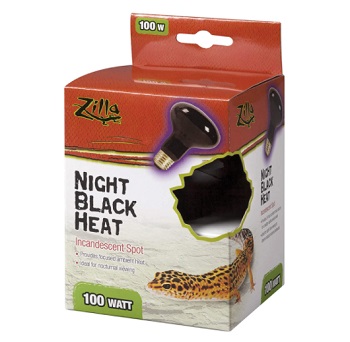
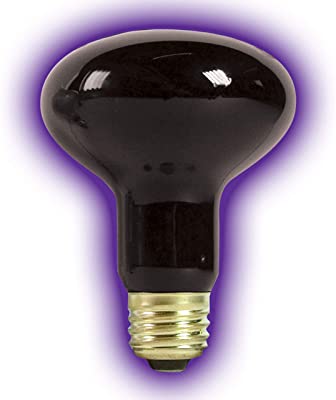
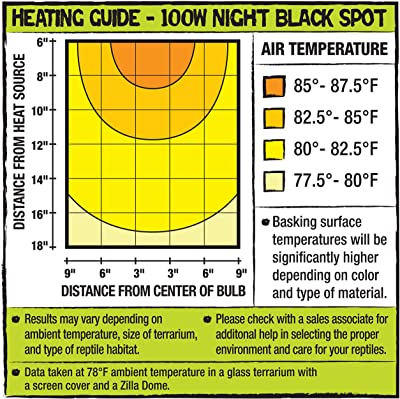


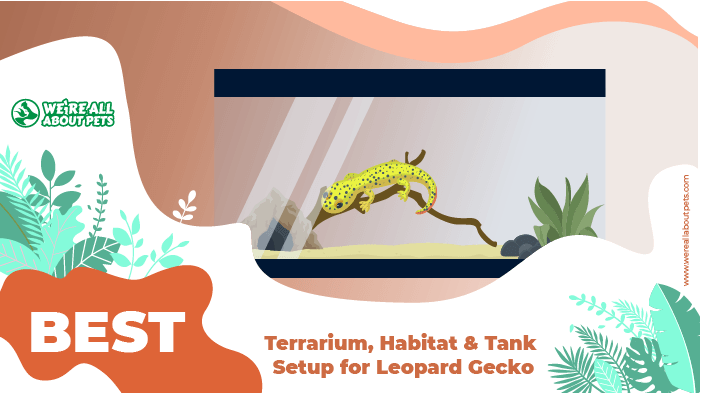
John Jenner
Some of the things mentioned on here are not correct !!
Ron Harris
Hi John, Can you let us know what is not corrent? We'll have our team look at it ASAP
Will
I'm not sure what info John is claiming as incorrect, but recent studies show that Leopard Geckos actually benefit from mild UVB light.
Jaden Tumblin
I can tell you, Infrared light is not right for leopard gecko, for they can not see red BUT the can see light so in conclusion they are not seeing red light BUT the are seeing light also it can damage their eyes.
K. Bennett
A little bit of research shows that leopard geckos do NOT in fact enjoy red lights at all, as they dont actually see the color red. To them, it looks like another white bulb. For leopard geckos, a BLUE light is the better option for night time. Please don't advocate red bulbs for leos.
Kate Barrington
Thanks for pointing that out, K! We've updated our research and made a few edits to the piece to reflect your comments.